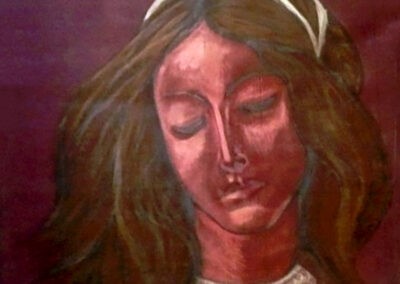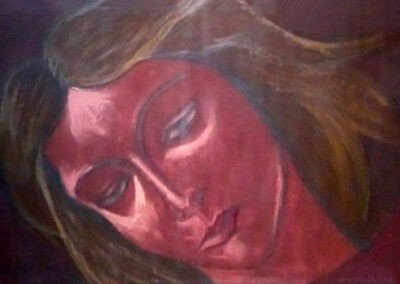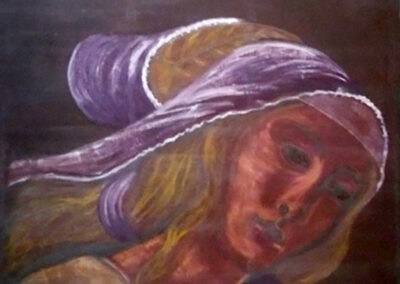The Slander of Apelles
Serie: Large Format Artworks
Technique: Latex on canvas
Measurements:
The Slander: 115 x 90 cm
The Perfidy: 130 x 100 cm
The Imposture: 155 x 100 cm
Year: 2003
Sandro Boticcelli, Italy 1445-1510
Renaissance painter born in Florence.
His real name was Alessandro di Mariano Filipepi, however, he is known as Boticelli (which in Italian is the diminutive of the word "botijo": which means pot).
By 1470 Botticelli already had his own workshop. He spent most of his life working for the great Florentine families, especially the Medici.
He made paintings with both secular and religious themes and for this reason, in 1481 he was one of the artists called to Rome to work on the decoration of the Sistine Chapel of the Vatican, where he painted the frescoes "The tests of Moses", "The punishment of the rebels "and" The temptation of Christ. "
He died on May 17, 1510
"The Slander" is Botticelli's last mythological production.
It is unknown who was the client who commissioned it, which has motivated a barrage of hypotheses.
Despite its content, the work must be framed in the transformations that Florence was undergoing at the end of the late Quattrocento of the century that brought the tension and fear before the arrival of the end of the world that the preachers shouted.
The name by which we know this small panel is determined by an accusation of envy by the Greek painter Antiphilos to his colleague Apelles.
He was accused of provoking a revolt against the Egyptian king Ptolemy IV for which he was imprisoned, obtaining his freedom when a true leader of the rebellion declared the painter's innocence.
The king rehabilitated Apelles and granted Antiphilos as a slave, the artist making a work in reference to his case.
The story is known thanks to the poet Luciano, making Botticelli a new version of the matter.
Botticelli presents a good number of characters inside a typically Renaissance palace, with an arcade in the background in which we can appreciate the coffered vaults decorated with various scenes that are repeated in the frieze
Various characters appear in the main group: a young man is the Victim dragged along the ground, naked because he has nothing to hide and in an imploring attitude to put an end to this situation; Slander grabs him by the hair, carrying in his left hand a torch in relation to the way slander spreads like smoke from fire; two beautiful young women braid the hair of Calumny with a white ribbon: Imposture and Perfidy, inseparable companions of Calumny, who under their sweet and serene appearance destroy the victim.
These paintings are, precisely, details of the faces of these three young women, made with the "scraping" or "dry brush" technique.
NOT AVAILABLE FOR SALE
< Back to PORTFOLIO



